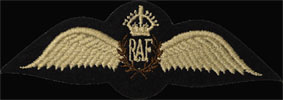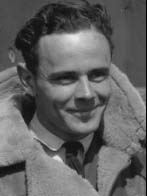

Photo Aircrew pilots RAF Sqn Ldr Marmaduke Pattle (South African)

Pattle (left), while serving with No. 33 Squadron RAF, in 1941 with the squadron's adjutant, George Rumsey
IWM caption : Squadron Leader Marmaduke Thomas St John "Pat" Pattle, Officer Commanding No. 33 Squadron RAF, and the Squadron Adjutant, Flight Lieutenant George Rumsey, standing by a Hawker Hurricane at Larissa, Thessaly, Greece.
Sqn Ldr Marmaduke Pattle (South African) DFC and BAR, 80SQN. and 33SQN., RAF usually known as Pat Pattle
Remarks: Although Marmaduke Pattle was undoubtedly the top-scoring Allied pilot of the Second World War, even today his exact number of victories is unknown, various sources crediting him with between 33 and 65 enemy aircraft confirmed destroyed in addition to others probably destroyed and damaged. What is remarkable, however, is that whichever is the correct number, it was achieved in just nine months of action.
Marmaduke Thomas St. John Pattle was born in Butterworth, Cape Province, on 3 July 1914, the son of English parents who had emigrated to South Africa. On leaving school in 1936, he joined the SAAF as a cadet but soon applied to join the RAF which was recruiting in South Africa, and left for England in April 1936. After initial training at the Central Flying School, Prestwick, Pattle joined No. 10 Flying Training School in Shropshire, where he proved to be a well above average pilot and an exceptional marksman. In early 1937, Pattle was posted to No. 80 Fighter Squadron at Henlow which had recently received Gloster Gladiator I biplanes. At the end of April 1938, 80Sqn. was posted to Ismailia in Egypt where, by mid-1939, Pattle was commanding 'B' Flight.
By August 1940,80Sqn. had moved up to Sidi Barrani, close to the Libyan border, and 'Pat' Pattle's first action occurred on 4 August when 'B' Flight was ordered to provide escort for a Lysander carrying out reconnaissance duties over the Libyan border. The Lysander was attacked by Italian fighters and in the ensuing fight, Pattle shot down a Breda 65 and a CR-42 but was himself forced to bale out. He walked to the Egyptian border where he was picked up by the British Army. Four days later, Pattle shot down two more CR-42s and, on 15 September, damaged an SM.79.
Although 80Sqn. received its first Hurricane in June 1940, there was never enough to equip the whole squadron and, after operating for a while with both Gladiators and Hurricanes, the latter were eventually handed over to another unit in November and 80Sqn. received Gladiator IIs. In early November, the squadron was ordered to Greece and made its first sorties from Trikkala on the 19th when Pattle was awarded two CR-42s. In December, Pattle's score continued to increase with two RO.37s destroyed on the 2nd and three CR-42s on the 4th. With a score of 11 confirmed, Pattle was awarded the DFC.
In February 1941, 80Sqn. finally converted to Hurricanes and on the 9th Pattle claimed a CR-42. This was followed by a Cant Z.1007 and a BR.20 damaged on the 10th, and a G.50 destroyed on 20th. On the 27th he destroyed another CR-42, and in a series of engagements on the 28th he was credited with four CR-42s destroyed and a probable. In a number of sorties on 4 March, Pattle was credited with three G.50s destroyed and a CR-42 probably destroyed. Pattle was now awarded a Bar to his DFC and was posted to command 33Sqn. which was also in Greece and equipped with Hurricanes. On 23 March he was credited with one G.50 confirmed shot down and one probable, plus three further G.50s destroyed on the ground.
On 6 April, the Germans invaded Greece and Greek and British forces were soon forced into retreat. The RAF continued to engage the German and Italian forces but conditions were chaotic and although Pattle's early claims were documented, many records were lost during the retreat. Thus, while many claims made during April received no official confirmation, it would seem that by the 20th his score had reached at least 50 including a Ju-88, a Bf-110, a number of Bf-109s, an He-111 and a Do-17.
On 18 April, 33Sqn. moved to Eleusis in the south of Greece where it joined up with the remnants of Pattle's old 80Sqn. By this time, the almost non-stop operations with only very short periods of rest were beginning to tell on his nerves. Apart from being both physically and mentally tired, he was also ill with influenza, suffering from a high temperature and bouts of shivering. Nevertheless, when in the afternoon of 20 April over 100 German and Italian aircraft were reported to be heading for Piraeus Harbour, Pattle insisted on flying. With their airfield under attack by Bf-110s, 15 Hurricanes, the remnants of 80 and 33Sqns., now the only British fighters left in Greece, took off singly and, once in the air, managed to form up into small sections. Pattle, who had been lying shivering on a couch, covered with blankets, was the last to take off. He climbed and had positioned himself about 1,000 feet above a defensive circle of Bf-110s when he saw a lone Hurricane rising to attack from below. The Hurricane was flown by P/O W J. Woods, who was unaware that a Bf110 had detached itself from the circle and was diving to attack him. Pattle now dived to protect the Hurricane and, pulling up under the aircraft firing at Woods, shot it down in flames. Meanwhile, the circle of Bf-110s had broken up and the Zerstörers streamed down on Pattle's tail. In the ensuing fight Pattle is believed to have destroyed another Bf-110 and also a Bf-109 (Possibly that flown by Uffz. Fritz Borchert of III./JG77) but apparently fell victim to the superior number of enemy aircraft. His Hurricane was last seen falling in flames into Piraeus Harbour, the pilot slumped in the cockpit, still being fired at by two Bf-110s.
Because all official records of the last few weeks in Greece were destroyed, there is no authenticated confirmation of Pattle's total number of victories and his last official score is 23, as mentioned in the citation for his Bar to the DFC in March 1941. There is little doubt, however, that his true tally was much higher and that Pattle was the highest scoring pilot of the RAF and Commonwealth Air Forces.
Web References: +
- Wikipedia - https://en.wikipedia.org/wiki/Pat_Pattle